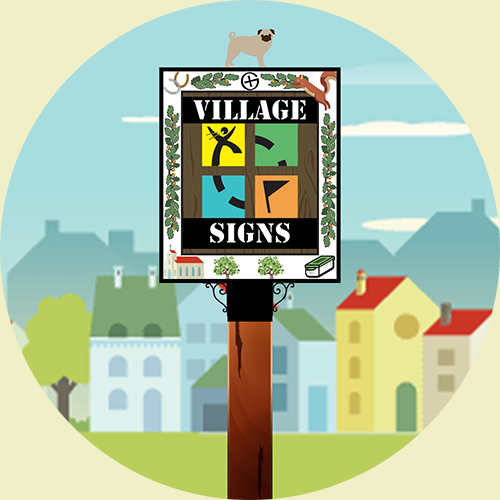The sign, which stands in the middle of the Southgate's roundabout, was taken down after it was found to have suffered weather damage. It was repaired by a specialist firm of sign writers in April 2017.
The sign has been completely stripped and repainted, and parts of the wood that had rotted have been repaired or replaced. One part that was re-carved was the dragon that one side of the sign depicts St Margaret of Antioch, the patron saint of Lynn, defeating. The other side of the sign depicts Henry Bell, the architect of Lynn’s famous Custom House.
The shields and scrolls at the top of the sign were also replaced. The shield shows the town’s arms, with the pelican crest Lynn adopted in the 18th century sitting on top.
The tradition of town signs has its origins on the Royal Estate, a few miles up the road from Lynn at Sandringham. King Edward VII thought the signs would help drivers and also highlight interesting village features. Signs soon appeared by the roadside at West Newton, Wolferton and Dersingham.
In 1920 his son Albert, then Duke of York gave a speech commending the usefulness of town signs. From there, they spread across Norfolk, Suffolk and further afield.
Swaffham carver and woodwork teacher Harry Carter is reckoned to have carved more than 200 of them before his death in 1983. For more information on Harry Carter visit Swaffham village sign cache page.

About Village Sign Caches
|
 ⠀ ⠀ |
This cache belongs to the Village Sign Series, a series of caches based on ornate signs that depict the heritage, history and culture of the villages that put them up (generally on the village green!).
The signs can be made of different materials from fibreglass to wood, from forged steel to stone. They can depict anything from local industry to historical events. The tradition probably started in Norfolk or Suffolk and has now spread across most of the country so we thought we would base a series on them!
|
More information, bookmarks and statistics can be found at the Village Signs Website
If anybody would like to expand the Village Sign Series, please do.
I would ask that you request a number for your cache first at www.villagesignseries.co.uk
so we can keep track of the Village Sign numbers and names to avoid duplication.